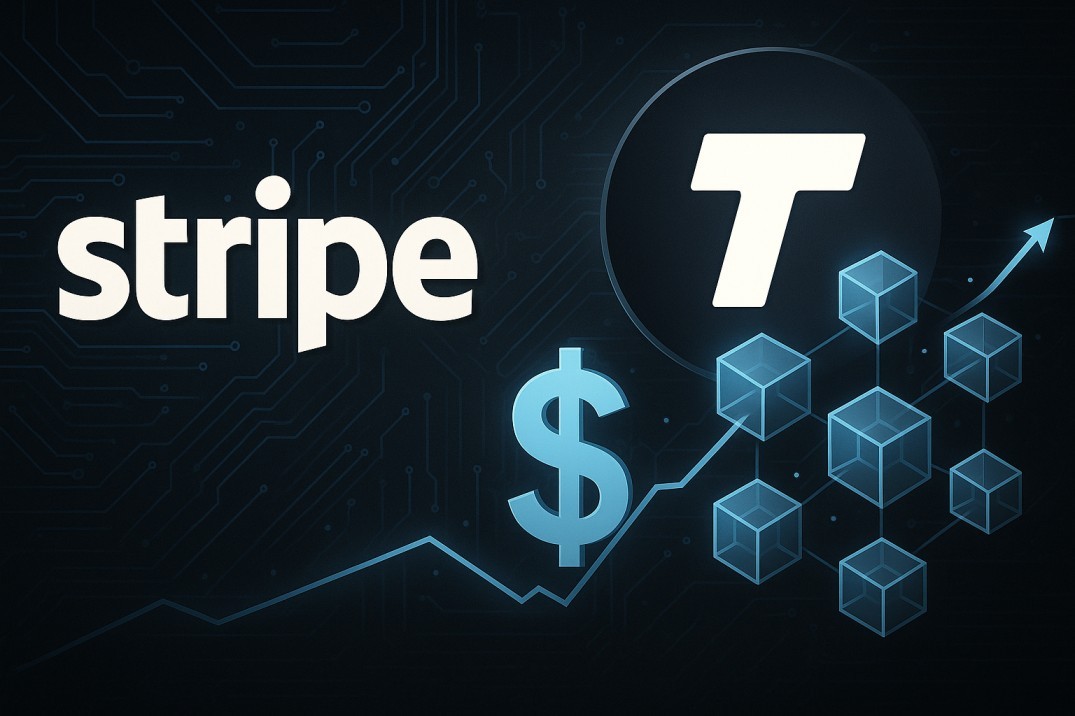TL;DR
- Stripe's blockchain project, Tempo, raised $500 million in Series A funding, valuing it at $5 billion.
- The round was led by Thrive Capital and Greenoaks, with participation from Sequoia, Ribbit Capital, and SV Angel.
- Tempo aims to be a Layer-1 blockchain optimized for real-world payments, focusing on stablecoin and high-throughput transactions.
- Stripe's CEO Patrick Collison says Tempo is "the payments-oriented L1," built to serve global financial applications.
- Competitors like Circle's upcoming blockchain and USDC's growing market dominance set the stage for an onchain payments race.
- Stripe's Tempo could bridge traditional finance (TradFi) and crypto-native systems, challenging long-held assumptions about blockchain scalability and regulation.
Stripe, one of the world's most recognized payments companies, has taken another ambitious leap into crypto. Its newly incubated blockchain project, Tempo, has raised $500 million in a Series A round led by Thrive Capital and Greenoaks, reaching a $5 billion valuation less than two months after launch, according to Fortune.
Other notable participants include Sequoia Capital, Ribbit Capital, and SV Angel, though neither Stripe nor its early partner Paradigm contributed new capital in this round. This remarkable valuation cements Stripe's evolution beyond being a fintech service provider - it now seeks to become a blockchain infrastructure player capable of shaping the next era of global payments.
Tempo: Stripe's Answer to a Fractured Payments Landscape
When Stripe CEO Patrick Collison announced Tempo on X (formerly Twitter) early September, he emphasized a clear purpose:
He explained that current networks, though powerful, aren't tailored for payment-specific features like batch transfers, fiat-denominated fees, and extreme throughput - all critical for handling real-world transactions.
In short, Tempo aims to merge Web3 flexibility with Stripe's fintech-grade reliability, creating what Collison called:
Tempo's design philosophy centers around performance, accessibility, and neutrality. The blockchain plans to support a built-in stablecoin AMM (automated market maker) to ensure platform neutrality among different stablecoins - meaning that whether a user prefers USDC, USDT, or other tokens, Tempo can process them without bias.
Stripe also outlined a diverse validator set including early design partners such as Visa, Deutsche Bank, DoorDash, Shopify, Revolut, Nubank, and even OpenAI. This broad coalition hints at Tempo's ambition to become the universal settlement layer for global payments, transcending both crypto-native and traditional finance boundaries.
Paradigm's Engineering Backbone

Although Tempo remains in its early development stages, Paradigm CTO Georgios Konstantopoulos confirmed that engineers from Ithaca, an open-source research team known for optimizing blockchain systems, are joining the project to help scale its payments infrastructure.
This partnership gives Tempo a strong technical foundation, ensuring it can handle tens of thousands of transactions per second (TPS) - the kind of scale Stripe already manages across its fiat-based systems.
Why Stripe's Move Matters
Stripe's entry into the blockchain race isn't just another corporate experiment. It represents the convergence of Web2 and Web3 payments - an effort to integrate digital assets into mainstream commerce in a compliant, user-friendly way.
For years, Stripe has powered online businesses and startups globally. Now, with Tempo, it's extending that infrastructure into crypto settlement and stablecoin transfers, enabling everything from cross-border remittances to microtransactions to happen onchain.
If successful, this could bring millions of merchants into blockchain without the usual complexity - a key step toward mass adoption.
A Growing Stablecoin Arms Race
Tempo enters an increasingly competitive market dominated by Circle, the issuer of USDC, and Tether's USDT.
USDC currently has a market cap of around $75.6 billion, integrated into major payment rails like Mastercard and Visa. And in August, Circle announced its own plans to launch a Layer-1 blockchain, promising "enterprise-grade foundations" for stablecoin payments and tokenized assets. While Circle's approach centers around expanding the utility of USDC, Stripe's Tempo is about infrastructure - building a blockchain that's fundamentally optimized for stablecoin use at scale, regardless of issuer.
This difference could be crucial: while most blockchains adapt to payments, Tempo is being engineered for it from the ground up.
Final Thoughts
Stripe's Tempo represents a pivotal moment in the ongoing fusion of fintech and crypto. Backed by billions in capital and guided by a vision that prioritizes utility over speculation, Tempo isn't trying to reinvent money - it's trying to make moving money as seamless onchain as it is online.
Whether it becomes the backbone of next-gen finance or simply accelerates innovation across the sector, one thing is clear: the payments race has officially moved onchain.
READ MORE : What is COTI V2: Revolutionizing Blockchain Privacy with Garbled Circuits











